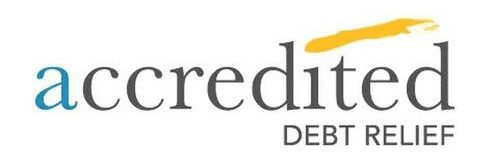As a business owner or individual borrower, understanding your cost of debt is crucial. This figure represents the amount of money you will pay overtime to borrow funds. Failing to calculate your cost of debt accurately can result in overpaying on loans and making poor financial decisions. In this blog post, we will delve into the concept of the cost of debt, highlighting the differences between Debt Settlement vs Debt Consolidation as strategies for managing debt effectively.
We will discuss the definition of the tax cost of debt, explain the cost of debt formula, explore the factors that affect it, and outline the methods used to calculate it. By gaining a comprehensive understanding of the cost of debt and considering these alternatives, both businesses and individuals can make informed financial choices, optimize their borrowing costs, and achieve better financial outcomes.
Understanding the Cost of Debt

Debt can come in various forms, including loans, bonds, and lines of credit. Each type of debt has its own terms and conditions, which can affect the cost of borrowing.
Several factors can impact the cost of debt, including credit rating, your interest payments, rates, and market conditions. These factors can change over time, so it is essential to stay informed and adjust your borrowing strategy accordingly.
The cost of debt calculation includes the interest rate, fees, and any other charges associated before tax cost, with borrowing money. It is important to consider all of these components when calculating the cost of debt accurately.
Methods of Calculating Cost of Debt
Yield to Maturity (YTM)
YTM is a method used to calculate the total return expected on a bond if held until maturity. It is debt formula that takes into account the bond’s current price, face value, coupon rate, and time until maturity.
Debt Yield
Debt yield is the annual return a lender expects to receive on a loan. It is the market value calculated by the annual interest expense dividing the loan’s net operating income by the loan amount.
Weighted Average Cost of Capital (WACC)
WACC is the average cost of financing a business, taking into account total debt, and equity. It is calculated by multiplying the cost of debt by the percentage of debt in the company’s capital structure and adding the cost of equity multiplied by the percentage of equity.
Factors That Affect Cost of Debt
- Credit Rating: Credit rating is a measure of a borrower’s creditworthiness. Those with higher credit ratings are considered less risky and can obtain loans at lower interest rates.
- Interest Rates: Interest rates can fluctuate based on market conditions, inflation, and other factors. Higher interest rates can result in higher borrowing costs.
- Market Conditions: The state of the economy can also affect the cost of debt. In times of economic uncertainty, lenders may be more cautious, resulting in higher borrowing costs.
Importance of Accurately Calculating Cost of Debt
- Avoiding Overpaying on Loans: Calculating your cost of debt accurately can help you avoid overpaying on loans. By understanding the total cost of borrowing, you can make informed decisions and negotiate better terms.
- Making Informed Financial Decisions: Knowing your cost of debt can also help you make informed financial decisions. It can help you determine if taking on debt is a wise choice and which type of debt is best suited for your needs.
Steps to Calculate Cost of Debt

- Gathering Necessary Information: To calculate your cost of debt, you will need to gather information about the loan or bond, including the interest rate, fees, and any other charges.
- Selecting Appropriate Method: Once you have gathered the necessary information, you can select the appropriate method to calculate your cost of debt. Consider factors such as the type of debt and the length of time you expect to hold it.
- Calculating Cost of Debt: Using the chosen method, calculate the cost of debt by taking into account all applicable fees and charges.
Conclusion
In conclusion, calculating your cost of debt is crucial to making informed financial decisions and avoiding overpaying on loans. By using debt calculator and understanding the factors that affect your cost of debt and the tax cost and methods used to calculate it, you can take control of your borrowing strategy and achieve your financial goals. Take action today and calculate your cost of debt to make the most of your borrowing opportunities.
Frequently Asked Questions

What is the cost of debt?
Cost of debt is the total interest and rate a a company’s financial health or must pay on its debt financing, including bonds, loans, and other forms of borrowing.
Why is it important to calculate the cost of debt?
It’s important to calculate cost of debt because it helps a company understand the true cost of its debt financing, its cash flow and can inform decisions about whether to borrow more or pay off existing debt.
How do you calculate the cost of debt?
Cost of debt can be calculated by the interest expenses by dividing the total interest expense amount by the total amount of debt.
What factors affect the cost of debt?
Factors that affect average interest rate and the cost of debt include the creditworthiness of the borrower, the current interest rate environment, and the length of the loan term.
What is the difference between the cost of debt and the cost of equity?
Cost of debt is the cost of a company pays business loan borrowing money, while cost of equity is the cost of issuing stock.
How does cost of debt impact a company’s financial statements?
Cost of debt impacts a company’s financial statements by less taxable income and increasing its interest expense after tax cost, which reduces its net income and earnings per share.
What is the weighted average cost of capital (WACC) and how is it related to cost of debt?
The weighted average cost of capital (WACC) is the weighted average of a company’s cost of debt and cost of equity, and it’s used to determine the minimum rate of return a company must earn to the tax cost of debt and equity financing satisfy its investors. Cost of debt is one of the components of WACC.
How can a company lower its cost of debt?
A company can lower effective interest rate on its debt holders’ cost of debt by improving its creditworthiness, negotiating lower interest rates, or using collateral to secure its loans.
What are the risks associated with taking on too much debt?
Risks associated with taking on too much debt include higher annual interest rate and expenses, reduced earnings, tax savings and increased financial instability.
How does cost of debt vary by industry?
Cost of debt varies by industry based on factors such as the level of competition, the stability of the industry, the top income tax and rate, and the overall health of the economy.
Glossary
- Cost of Debt: The total amount of interest and fees that a borrower pays on a loan.
- Interest Rate: The percentage of the loan amount charged as interest by the lender.
- Principal Amount: The initial amount borrowed from the lender.
- Term: The length of time over which the loan is repaid.
- Amortization Schedule: A table that shows the breakdown of each payment made towards the loan, including the amount of principal and interest paid.
- Annual Percentage Rate (APR): The total cost of borrowing, including interest rates and fees, expressed as a percentage.
- Credit Score: A numerical value assigned to an individual based on their credit history and payment behavior, used to determine their creditworthiness.
- Collateral: Property or assets offered as security for a loan, which the lender can seize if the borrower defaults on the loan.
- Fixed Interest Rate: A set interest rate that remains the same throughout the life of the loan.
- Variable Interest Rate: An interest rate that fluctuates based on market conditions, which can result in higher or lower payments over time.
- Prepayment Penalty: A fee charged by lenders when the borrower pays off the loan before the end of the term.
- Origination Fee: A fee charged by lenders for processing and approving the loan application.
- Debt-to-Income Ratio: The percentage of a borrower’s income that goes towards paying off debts.
- Refinancing: The process of replacing an existing loan with a new loan, often with better terms and lower interest rates.
- Debt Consolidation: The process of combining multiple debts into a single loan, often with a lower interest rate and lower monthly payments.
- Balloon Payment: A large payment due at the end of the loan term, often used in mortgage loans.
- Compound Interest: Interest that is calculated on both the principal amount and accumulated interest, resulting in a higher total cost of borrowing over time.
- Adjustable Rate Mortgage (ARM): A mortgage loan with an interest rate that adjusts periodically based on market conditions.
- Simple Interest: Interest that is calculated only on the principal amount of the loan.
- Installment Loan: A loan that is repaid in regular, fixed payments over a set period of time.
- Tax deductible: An expense or donation that can be subtracted from taxable income, thereby reducing the amount of tax owed.
- Pre-tax cost: The cost incurred before taxes are deducted.
- Tax rate: The percentage of income or property value that is levied by a government as a tax.
- Debt holder: A debt holder is an individual or entity that has lent money to another individual or entity and is owed repayment of that debt.










